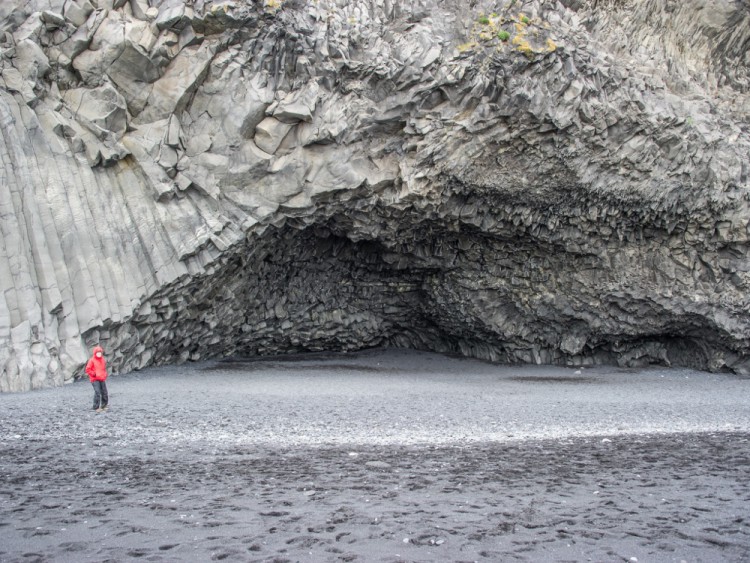The following post is part of our “My Destination” series, in which staff or clients of Nordic Visitor tell us about their favourite highlights from our Nordic destinations.
The only thing we love more than being out on the road ourselves is seeing our travellers' adventures unfold in words and pictures. Alice and Bob Friedenson, who travelled on a custom version of our Iceland Grand Tour to celebrate their 51st wedding anniversary, documented each day of their 21-day journey in June.
Using the Pages app on her iPad, Alice, a sculptor and retired math teacher, kept up the daily travel journal while her husband Bob, a photographer and retired engineer/computer scientist, maneuvered their 4x4 rental jeep counter-clockwise around Iceland. Combined they took more than 4000 photos!
In the first of the three-part series, we follow Alice and Bob all the way from Boston, Massachusetts, USA to Iceland's southeastern part.
June 5 – 6, 2015: arrival to Reykjavik
Our trip to Iceland begins at Logan Airport on June 5, 2015. Only five hours to Reykjavik, we arrived at 11:40 PM. Sunrise, which we happily missed, was at 3:10 AM.
After breakfast we boarded a bus to The Blue Lagoon, located between the airport and our hotel. Gray lava covered with moss drapes the countryside. We passed many volcanoes, though only one is active. The air temperature, 45F - 50F, contrasts with the 98F – 100F degree waters. Though the lagoon is man-made, it feels natural and is part of a beautiful setting.
We are very comfortable submerging ourselves for more than an hour though begin feeling dehydrated. The geothermal water has a unique composition, featuring three active ingredients – silica, algae & minerals. The blue color comes from the silica and the way it reflects sunlight. During summer there can also be a hint of green in the water. This is the result of the algae, which multiplies quickly when exposed to direct sunlight.
Returning to Reykjavik, we walked to the waterfront enjoying views of the city with the varied ships here for the Festival of the Sea. Reykjavik reminds me of Bariloche, Argentina with its maritime setting.
The city is immaculate: most buildings are white, some with accents of bright colors. Because it is so cold, no one goes outside to litter or paint graffiti. Though most have flat roofs and are simple box structures, some, like the Harpa Opera House, are geometrically designed architectural masterpieces.
June 7, 2015: More Reykjavik
Today we really explore Reykjavik. After breakfast I enjoyed the [Einar Jónsson] sculpture garden across the street from our hotel. While pointing to the sparse leaves on trees, a guide explained that climate change, not climate warming, is affecting the city in similar ways as it is affecting Boston. Normally, there is very little snow in Reykjavik and skiing in nearby mountains is a very short season. This past winter they had more than 40 snow storms and skied through April 17th. Winds were frequently around 120 km/hr, causing much damage.
Next to the gardens we admire the design of Hallgrímskirkja, a Lutheran parish church in Reykjavík. At 73 meters tall, it was designed with amazing Expressionist architecture made of white concrete and designed to look like an erupting volcano. The statue in front is of Leif Eiriksson, the Viking discoverer of America of whom they are quite proud.

Next we enjoyed a guided walking tour of Reykjavik, learning that crime here is almost nonexistent, and that Reykjavik and its suburbs have about ⅔ of the population of Iceland—which has 330,000 total people, almost all related to each other (and the Vikings) if you go back 4 or 5 generations. Other factoids: about 80% of the population are at least high school graduates, and Bill Clinton loved the hot dogs here.
June 8, 2015: Golden Circle
Our real trip began today. Up early, we picked up our rental car, a 4-wheel-drive Nissan Pathfinder, and left Reykjavik. Amazing waterfalls, sheep everywhere (white, black, Longhorns) all playing and snuggling together, as well as cattle, horses, and birds in flat pastures beneath snow covered mountains and meandering rivers.
We took a short hike in stormy rain to our first waterfall at Þingvellir [National Park]. To dry off, we stopped for ice cream at a cattle farm, both a dairy and meat farm and a farm-to-restaurant concept. The cows are free to enter and leave the barn; it is a natural life for them. In the rain most chose the barn. One cow reminded me of the turtles in Hawaii—he was fascinated with my camera. I took his photo as he licked it, and later I licked my ice cream cone. Seemed fair.
The next stop felt like Yellowstone. We were at the Strokkur geyser, which erupts every 5-10 minutes. It was one of several geysers at the Geysir geothermal area. That's not a misspelling but the derivation of our English word that comes from it. The entire area was smoky even under the heavy rain. I saw it erupt 3 times. The blue color comes from the lack of oxygen.
Further on, the Gullfoss waterfall really impressed us. It is larger than Niagara Falls and is the largest waterfall in Europe changing directions as it flows. Kerið, á 55 meter volcanic crater, was the final discovery for our day. If only it had been a swimming hole. Although the air temperature was in the 40's (F), it was very enticing.
June 9, 2015: South Coast
Fabulous day: no rain, gray sky but sunshine in parts and 59 degrees F! Volcanic rock covered with moss was everywhere, as well as goats, sheep, horses, swans, puffins, seagulls, planted trees, and flat plains. Eyjafjallajökull volcano was in the distance. Waterfalls, glaciers, lake! We took short hikes most of the day.
The Seljalandsfoss waterfall was big, wide, tall, powerful and beautiful. I felt the spray when I climbed behind it. Nearby, the Gljufrabúi waterfall was hidden behind its own canyon. Reaching it was a challenge as I had to walk across a stream balancing on rocks. Others hikers were really helpful.
Skógafoss waterfall, even taller, was the next adventure. Climbing to the top meant many challenging stairs. Beyond the top was a narrow river, pasture, and mountains, all wonderful views.
Later, we explored the black sand beach south of Vik and the basalt rock formations of Dyrhólaey and Reynisdrangur. They were used as models for the [Harpa] Opera Center and the church in Reykjavik.

Most impressive were the canyons at the Fjaðárgljufur. The lava formations compare to nothing we have ever seen.
June 10 – 11, 2015: Southeast Iceland
Two amazing days! Started with a good breakfast buffet at the hotel including waffle, fruit, and delicious coffee. I can't resist it here.
We took a guided glacier hike at Skaftafell. The guides were fabulous, very helpful and knowledgeable. We learned that:
- blue ice has little air and is the oldest ice on the glacier
- crevices are to be taken seriously and small ones can open further without notice
- even where the volcanic ground looks like it lacks ice, digging an inch produces ice
- glaciers are beautiful
- somehow when it is raining all around, there is no rain on the glacier (this is strictly our observation, not a scientific fact)

Watching ice float at the Jökulsárlón lagoon reminded us of Argentina. The glacier pieces begin in the mountain, are swept to the lagoon, and eventually melt in the ocean. We saw them by boat and by foot. It also reminded us of our trip to Colorado and Utah national parks, where we enjoyed naming rock formations. The beaches we saw have ocean polished stone, no shells.
Bob is an amazing driver. He navigated a dirt road to get here. Walking on this is like tundra in Alaska. We saw our first reindeer in the distance.
In Höfn, a small fishing town, I bought a handmade sweater. I had yummy langoustine [small lobsters] at Humarhöfn restaurant. Bob has lamb again. The following evening we ate at another local favorite, Kaffi Hornid. I had lamb and Bob enjoyed beef at last. Great pottery!
Stay tuned for Parts 2 and 3!
Heartfelt thanks to Alice and Bob for sharing their Iceland travel diary with us! To make your own Nordic travel story, check out all the possibilities offered by Nordic Visitor.










